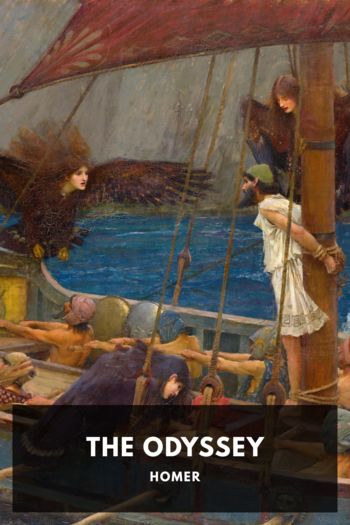The Saboteurs by Clive Cussler (top 10 best books of all time .TXT) 📗

- Author: Clive Cussler
Book online «The Saboteurs by Clive Cussler (top 10 best books of all time .TXT) 📗». Author Clive Cussler
“Chinese in origin. It means ‘to avoid humiliation.’” Bell could find little fault in Ramirez’s theory, with the exception the guerrillas had gone too far by targeting a United States Senator on American soil. For that, they would be brought to justice, and the cost be damned. He said as much to Felix.
“Ah, there you might have a point,” Ramirez conceded. “I formulated my theory before that particular attack, and now with such loss of life at Pedro Miguel, maybe I should rethink everything.”
“I haven’t been able to wrap my mind around their exponential escalation in violence. It’s like there’s a deadline looming over their insurgency.”
“The Marines are coming,” Ramirez reminded Bell.
“But it was the Viboras’s actions that triggered them being sent in the first place.”
“Timing? The canal is nearing completion. Probably less than a year away.”
Bell shook his head. “I don’t believe that’s the answer. Or the entire answer. There’s something else. Something I’m not seeing yet.”
“I have confidence you will find what you seek,” Felix said with his slender cigar clamped between whiter-than-white teeth. He gathered his papers and stood up. “In the meantime, have some breakfast. And as many espressos as your nerves can handle.”
17
Isaac Bell had no idea how many times he’d traversed continental America by train, but he was quite certain he’d never done it in a little over two hours. That was how long it took to get from Panama’s Pacific Coast to the Atlantic. The rail line was about fifty miles long and rose only a couple hundred feet in elevation. The difficulty for its builders was hacking through an almost impenetrable jungle with little more than hand tools.
The original route followed the Chagres River Valley, but with the river now dammed at Gatun, and the world’s largest artificial lake continuing to expand across the land, the line had to be rebuilt so it would curve around the lake’s eventual shore. They also had two sets of tracks so trains could run east or west simultaneously. With a hundred and thirty ore trains coming out of the Culebra Cut on a daily basis, the Panama Railway was mostly a freight-carrying line. However, until the canal was completed, passengers wishing to avoid the perils of the Drake Passage around Tierra del Fuego used the rails as a middle leg in their oceangoing journey from New York to California.
Bell and Marion had a seat in a carriage meant for travelers rather than canal workers, so it was nicer than the car he’d ridden in out to the Pedro Miguel Locks site. They sipped at a glass of blended tropical fruit juices he’d bought at the Panama City terminal and enjoyed their ride across the continent. In most places, the jungle was little more than arm’s length from the carriage windows, while there were other places where they had an expanded vista. Bell saw dozens of crews tasked with picking up rocks that had fallen out of the open-sided ore cars. He imagined if such maintenance wasn’t performed, the rail line would be choked off in a matter of days.
Marion cried with delight when they passed a tree filled with red-furred monkeys with wizened faces like old men.
“I believe they’re called tamarins,” Bell said.
“They’re adorable.”
The train rolled across the Chagres River on a low trestle bridge, and Bell got his first look at what essentially powered the Panama Canal. Since this was the rainy season, the river was swollen and surged with such power that it was like a living thing. The surface was muddy brown and littered with branches and boughs and entire trees it had torn from their roots as it eroded its way down from the highlands.
The train made several stops as it meandered across the country, exclusively at building sites affiliated with the canal’s construction. Few people got on or off, and the train left the stations quickly.
The Port of Colón, unlike Panama City, had no colonial history. It had been built in the swamps of Manzanillo Island on reclaimed land made possible by stone quarried nearby. It was meant to be the Atlantic port for the railroad. Thus, the city was not yet seventy years old when Bell handed his wife down from the train carriage onto the bustling station platform. Opposite were the freight yards, where machines and material shipped from the States were transferred to trains. Bell could see the harbor through a forest of electric-powered cranes and derricks. There seemed to be an armada of merchant ships in Limon Bay awaiting their turn to have their cargos unloaded.
Just at the limit of what Bell could see, a line of Jamaican men was boarding a two-masted schooner. Having seen the hellscape of the Culebra Cut firsthand, Bell could only imagine these men were happy to be heading home.
Colón was tidy, compared to Panama City, and logically laid out, more like New York than Boston, Bell thought. The streets were paved, for the most part, properly pitched so that water didn’t pool in the gutters. He found a taxi outside the station and instructed the driver to take them to the Gatun Locks. He showed the driver that he had a pass to enter the Canal Zone. Marion didn’t need one because she was with him.
The ride took only a few minutes.
The stage of completion at Gatun was ahead of the work at Pedro Miguel. The locks had already been backfilled to make access for mechanics installing the mitered gates easier. Here, rather than a single chamber, there were three locks strung together in a row that rose up the slope of an artificially constructed hill. In essence, it





Comments (0)